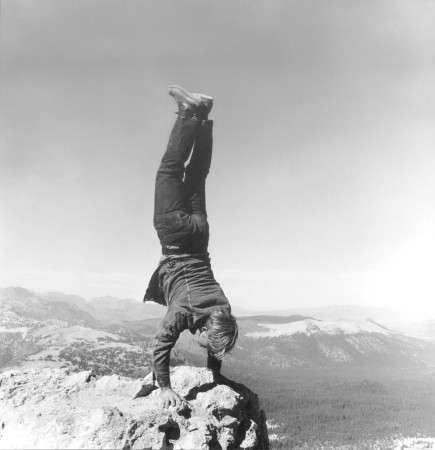Posts Tagged ‘Engineering Mindset’
Product Thinking

Product costs, without product thinking, drop 2% per year. With product thinking, product costs fall by 50%, and while your competitors’ profit margins drift downward, yours are too high to track by conventional methods. And your company is known for unending increases in stock price and long term investment in all the things that secure the future.
The supply chain, without product thinking, improves 3% per year. With product thinking, longest lead processes are eliminated, poorest yield processes are a thing of the past, problem suppliers are gone, and your distributers associate your brand with uninterrupted supply and on time delivery.
Product robustness, without product thinking, is the same year-on-year. Re-injecting long forgotten product thinking to simplify the product, product robustness jumps to unattainable levels and warranty costs plummet. And your brand is known for products that simply don’t break.
Rolled throughput yield is stalled at 90%. With product thinking, the product is simplified, opportunities for defects are reduced, and throughput skyrockets due to improved RTY. And your brand is known as a good value – providing good, repeatable functionality at a good price.
Lean, without product thinking has delivered wonderful results, but the low hanging fruit is gone and lean is moving into the back office. With product thinking, the design is changed and value-added work is eliminated along with its associated non-value added work (which is about 8 times bigger); manufacturing monuments with their long changeover times are ripped out and sold to your competitors; work from two factories is consolidated into one; new work is taken on to fill the emptied factories; and profit per square foot triples. And your brand is known for best-in-class quality, unbeatable on time delivery, world class performance, and pioneering the next generation of lean.
The sales argument is low price and good payment terms. With product thinking, the argument starts with product performance and ends with product reliability. The sales team is energized, and your brand is linked with solid products that just plain work.
The marketing approach is stickers and new packaging. With product thinking, it’s based on competitive advantage explained in terms of head-to-head performance data and a richer feature set. And your brand stands for winning technology and killer products.
Product thinking isn’t for everyone. But for those that try – your brand will thank you.
What They Didn’t Teach Me in Engineering School
 The technical stuff is the easy part. Technical systems respond predictably, but people don’t.
The technical stuff is the easy part. Technical systems respond predictably, but people don’t.
There’s nothing worse than solving the wrong problem, so before you start solving you’ve better done a whole lot of defining.
There is no exact answer; engineering is all about judgment.
Organizational structure is important. Whatever the structure, see its strengths and make them work for you. If you try to fight it, it will eat you.
Innovation isn’t about ideas, innovation is about commercializing ideas.
Engineering analysis can win minds, but not hearts. And hearts govern minds.
The engineer’s role is not to minimize risk; it’s to understand the commercial reward and take risk accordingly.
What people believe is far more powerful than what they think.
New technology threatens status quoers, and, in turn, they block it.
There is no problem unless someone important thinks there’s one.
All technical systems are really human systems masquerading as technical systems.
If you let it, fear dominates. Be afraid and do it anyway. But along the way, keep in mind that others are too afraid to try.
Engineering is not sane and rational; engineering is about people.
A Healthy Dissatisfaction With Success
 They say job satisfaction is important for productivity and quality. The thinking goes something like this: A happy worker is a productive one, and a satisfied worker does good work. This may be true, but it’s not always the best way.
They say job satisfaction is important for productivity and quality. The thinking goes something like this: A happy worker is a productive one, and a satisfied worker does good work. This may be true, but it’s not always the best way.
I think we may be better served by a therapeutic dose of job dissatisfaction. Though there are many strains of job satisfaction, the most beneficial one spawns from a healthy dissatisfaction with our success. The tell-tale symptom of dissatisfaction is loneliness, and the invasive bacterium is misunderstanding. When the disease is progressing well, people feel lonely because they’re misunderstood.
Recycled ideas are well understood; company dogma is well understood; ideas that have created success are well understood. In order to be misunderstood, there must be new ideas, ideas that are different. Different ideas don’t fit existing diagnoses and create misunderstanding which festers into loneliness. In contrast, when groupthink is the disease there is no loneliness because there are no new ideas.
For those that believe last year’s ideas are good enough, different ideas are not to be celebrated. But for those that believe otherwise, new ideas are vital, different is to be celebrated, and loneliness is an important precursor to innovation.
Yes, new ideas can grow misunderstanding, but misunderstanding on its own cannot grow loneliness. Loneliness is fueled by caring, and without it the helpful strain of loneliness cannot grow. Caring for a better future, caring for company longevity, caring for a better way – each can create the conditions for loneliness to grow.
When loneliness is the symptom, the prognosis is good. The loneliness means the organization has new ideas; it means the ideas are so good people are willing to endure personal suffering to make them a reality; and, most importantly, it means people care deeply about the company and its long term success.
I urge you to keep your eye out for the markers that define the helpful strain of loneliness. And when you spot it, I hope you will care enough to dig in a little. I urge you think of this loneliness as the genes of a potentially game-changing idea. When ideas are powerful enough to grow loneliness, they’re powerful enough to move from evolutionary into revolutionary.
Engineering Will Carry the Day
 Engineering is more important than manufacturing – without engineering there is nothing to make, and engineering is more important than marketing – without it there is nothing to market.
Engineering is more important than manufacturing – without engineering there is nothing to make, and engineering is more important than marketing – without it there is nothing to market.
If I could choose my competitive advantage, it would be an unreasonably strong engineering team.
Ideas have no value unless they’re morphed into winning products, and that’s what engineering does. Technology has no value unless it’s twisted into killer products. Guess who does that?
We have fully built out methodologies for marketing, finance, and general management, each with all the necessary logic and matching toolsets, and manufacturing has lean. But there is no such thing for engineering. Stress analysis or thermal modeling? Built a prototype or do more thinking? Plastic or aluminum? Use an existing technology or invent a new one? What new technology should be invented? Launch the new product as it stands or improve product robustness? How is product robustness improved? Will the new product meet the specification? How will you know? Will it hit the cost target? Will it be manufacturable? Good luck scripting all that.
A comprehensive, step-by-step program for engineering is not possible.
Lean says process drives process, but that’s not right. The product dictates to the factory, and engineers dictate the product. The factory looks as it does because the product demands it, and the product looks as it does because engineers said so.
I’d rather have a product that is difficult to make but works great rather than one that jumps together but works poorly.
And what of innovation? The rhetoric says everyone innovates, but that’s just a nice story that helps everyone feel good. Some innovations are more equal than others. The most important innovations create the killer products, and the most important innovators are the ones that create them – the engineers.
Engineering as a cost center is a race to the bottom; engineering as a market creator will set you free.
The only question: How are you going to create a magical engineering team that changes the game?
Engineering Incantations
 Know what’s new in the new design. To do that, ask for a reuse analysis and divvy up newness into three buckets – new to your company, new to your industry, new to world. If the buckets are too big, jettison some newness, and if there’s something in the new-to-world bucket, be careful.
Know what’s new in the new design. To do that, ask for a reuse analysis and divvy up newness into three buckets – new to your company, new to your industry, new to world. If the buckets are too big, jettison some newness, and if there’s something in the new-to-world bucket, be careful.
Create test protocols (how you’ll test) and minimum acceptance criteria (specification limits) before doing design work. It’s a great way to create clarity.
Build first – build the crudest possible prototype to expose the unfamiliar, and use the learning to shape the next prototypes and to focus analyses. Do this until you run out of time.
Cost and function are joined at the hip, so measure engineering on both.
Have a healthy dissatisfaction for success. Recognize success, yes, but also recognize it’s fleeting. Someone will obsolete your success, and it should be you.
To get an engineering team to believe in themselves, you must believe in them. To believe in them, you must believe in yourself.
Choose to Choose
 There will always be more work than time – no choice there. But, you can choose your mindset. You can choose to be overwhelmed; you can complain; and you can feel bad for yourself. You can also choose to invert it – you only work on vital projects because less important ones aren’t worth your time. Inverted, work is prioritized to make best use of your valuable time. When there’s too much work you can whine and complain, or you can value yourself – your choice
There will always be more work than time – no choice there. But, you can choose your mindset. You can choose to be overwhelmed; you can complain; and you can feel bad for yourself. You can also choose to invert it – you only work on vital projects because less important ones aren’t worth your time. Inverted, work is prioritized to make best use of your valuable time. When there’s too much work you can whine and complain, or you can value yourself – your choice
Most of us don’t choose what we work on, and sometimes it’s work we’ve done before. You can choose to look at as mind numbing tedium, or you can flip it. You can look at it as an opportunity to do your work a better way; to try a more effective approach; to invent something new. With repeat work you can dull it down or try to shine – your choice.
Sometimes we’re asked to do new and challenging work. You can choose to be afraid; you can make excuses; and you can call in sick for the next month. Or you can twist it to your advantage and see it as an opportunity to stretch. With challenging work you can stunt yourself or grow – your choice.
Negativity repels and positivity attracts – it’s time for you to choose.
More Risk, Less Consequence
 WHY? To grow sales in existing markets and create sales in new markets.
WHY? To grow sales in existing markets and create sales in new markets.
WHAT? Create innovative technologies and design products with more function and less cost.
HOW? Educate the engineering engine.
This is easier said than done, because for years we’ve set one-sided expectations – new products must work and timelines must be met – and driven risk tolerance out of our engineering engine. Now it’s time to inject it back in.
The message – Our thinking must change. We must take more risk, but do it safely by reducing negative consequences of risk.
To reduce negative consequences of risk, we must learn to localize risk through the narrowest and deepest problem definition, and learn to secure the launch so it’s safe to try new things.
We must do more up-front technology work, but learn to do it far more narrowly and deeply. We must learn to hold ourselves accountable to rigorous problem definition, and we must put our best people on technology projects.
To focus creativity we must learn to set seemingly unrealistic time constraints; to focus our actions we can look to a powerful mantra – spend a little, learn a lot.
The trouble with new thinking is it takes new thinking. If you don’t have it, go get it. If you already have it, figure out why you haven’t used it.
You might be a superhero if…
- Using just dirt, rocks, and sticks, you can bring to life a product that makes life better for society.
- Using just your mind, you can radically simplify the factory by changing the product itself.
- Using your analytical skills, you can increase product function in ways that reinvent your industry.
- Using your knowledge of physics, you can solve a longstanding manufacturing problem by making a product insensitive to variation.
- Using your knowledge of Design for Manufacturing and Assembly, you can reduce product cost by 50%.
- Using your knowledge of materials, you can eliminate a fundamental factory bottleneck by changing what the product is made from.
- Using your curiosity and creativity, you can invent and commercialize a product that creates a new industry.
- Using your superpowers, you think you can fix a country’s economy one company at a time.
Celestial Work and Gravitational Pull
 Meeting agendas are a good idea. They make clear what will happen and they’re time bound. (At least good ones.) They look forward in time and shape what will happen.
Meeting agendas are a good idea. They make clear what will happen and they’re time bound. (At least good ones.) They look forward in time and shape what will happen.
Meeting agendas are created by the organizer so others follow. It’s strange to think about, but from thin air, the organizer congers magic words on a page that shape direction. The agenda sets the agenda and it’s followed. But in truth, agendas are followed because we choose to follow.
But I want to introduce another schema – the work sets the agenda. In this parallel universe, we don’t choose to follow an agenda; we choose to do work so powerful it sets the agenda – work so dense its gravitational field pulls the organization toward it.
I can hear the moans and groans – we can’t choose the work we do. But you can – if your work is good enough. If your work is brighter than the sun, it’s undeniable and, like the sun, cannot be ignored.
I can hear the next round of moans – we can’t do work that good. But you can – if you think you can and you try. (The only way to guarantee you can’t is not to try.)
And the last round of groans – we’ll get fired if we fail. If you’ll get fired for trying to reinvent your universe, you’re working at the wrong place anyway.
If you like to follow agendas, follow them. But if you don’t, do celestial work, and set them.
Mindset for Doing New
 The more work I do with innovation, the more I believe mindset is the most important thing. Here’s what I believe:
The more work I do with innovation, the more I believe mindset is the most important thing. Here’s what I believe:
Doing new doesn’t take a lot of time; it’s getting your mind ready that takes time.
Engineers must get over their fear of doing new.
Without a problem there can be no newness.
Problem definition is the most important part of problem solving.
If you believe it can work or it can’t, you’re right.
Activity is different from progress.
Thinking is progress.
In short, I believe state-of-the-art is limited by state-of-mind.
The Dark Art of Uncertainty
 Engineers hate uncertainty. (More precisely, it scares us to death.) And our role in the company is to snuff it out at every turn, or so we think.
Engineers hate uncertainty. (More precisely, it scares us to death.) And our role in the company is to snuff it out at every turn, or so we think.
To shield ourselves from uncertainty, we take refuge in our analyses. We create intricate computer wizardry to calm our soles. We tell ourselves our analytic powers can stand toe-to-toe with uncertainty. Though too afraid to admit, at the deepest level we know the magic of our analytics can’t dispatch uncertainty. Like He-Who-Should-Not-Should-Be-Named, uncertainty is ever-present and all-powerful. And he last thing we want is to call it by name.
Our best feint is to kill uncertainty before it festers. As soon as uncertainty is birthed, we try slay it with our guttural chant “It won’t work, it won’t work, it won’t work”. Like Dementors, we drain peace, hope, and happiness out of the air around a new idea. We suck out every good feeling and reduce it to something like itself, but soulless. We feed on it until we’re left with nothing but the worst of the idea.1
Insidiously, we conjure premonitions of mythical problems and predict off-axis maladies. And then we cast hexes on innovators when they don’t have answers to our irrelevant quandaries.
But our unnatural bias against uncertainty is misplaced. Without uncertainty there is no learning. Luckily, there are contrivances to battle the dark art of uncertainty.
When the engineering warlocks start their magic, ask them to be specific about their premonitions. Demand they define the problem narrowly – between two elements of the best embodiment; demand they describe the physical mechanisms behind the problem (warlocks are no match for physics); demand they define the problem narrowly in time – when the system spools up, when it slows down, just before it gets hot, right after it cools down. What the warlocks quickly learn is the problem is not the uncertainty around the new idea; the problem is the uncertainty of their knowledge. After several clashes with the talisman of physics, they take off their funny pointy hats, put away their wands, and start contributing in a constructive way. They’re now in the right frame of mind to obsolete their best work
Uncertainty is not bad. Denying it exists is bad, and pretending we can eliminate it is bad. It’s time to demonstrate Potter-like behavior and name what others dare not name.
Uncertainty, Uncertainty, Uncertainty.

 Mike Shipulski
Mike Shipulski